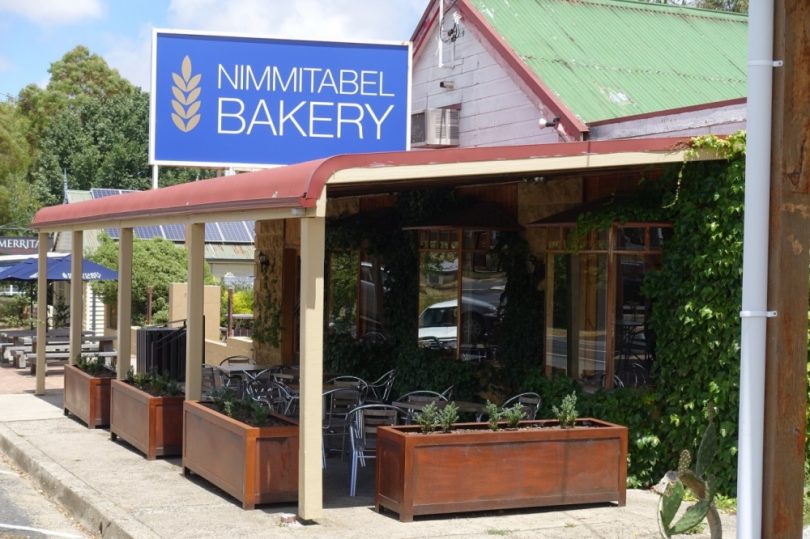
The disused Queanbeyan-Bombala rail line would offer spectacular scenery for cyclists and walkers. Photos: Supplied.
The development of a recreational trail along the disused rail line between Queanbeyan and Bombala would add $4 million a year to the regional economy, according to a pre-feasibility study.
The study, prepared by TRC Tourism for Monaro Rail Trail Inc, examined the case for establishing a trail for cyclists, walkers and runners along the 213km corridor, concluding that the potential tourism benefits warranted a more detailed study.
But the proposal faces considerable challenges, including opposition from significant landholders along the route with political clout and a push for a restored rail freight line between Canberra and the port of Eden on the South Coast.
NSW Deputy Premier John Barilaro has pledged a $1 million study into the new rail proposal if the Coalition Government is re-elected, but many are sceptical about its prospects.
Some landholders have concerns about biosecurity, having to adjust their farm practices and stock management, and privacy, but MRT says these fears are unfounded and similar issues have been resolved on interstate and overseas trails.
The study says the trail would revitalise regional towns and villages such as Michelago, Cooma, Bredbo and Nimmitabel where local, national and international tourists would need refreshments, food and accommodation.

Users already in the region who might extend their stay with a short bike ride of a day or two would add $1 million a year to the local economy.
But Canberra, with its strong cycling community and being a gateway for both national and international tourists, would be attracted by multi-day rides, adding a further $3 million to the regional economy.
The study based its estimates on other rail trails in Australia and overseas, particularly the popular and comparable Otago rail trail in New Zealand which contributes $10 million a year to the Otago region economy.
The rail trail demographic consists mainly of well-heeled baby boomers who are part of the growing active tourism movement.
Rail trails have taken off in other states, such as in north-east Victoria, and around the world but NSW seems to have been slow to come to the party, although it is funding a 25km pilot trail at Tumbarumba.
Cooma-based MRT president Mary Walters, who has ridden trails around the world, says the Monaro Rail Trail, once established with good quality services and with sound marketing, would achieve similar or stronger results to Otago.
Monaro Rail Trail member Andrew Carter, who is based in Canberra, says the national capital presents a huge market with almost half of the Territory’s 400,000 population having ridden a bike in the past 12 months.
“Michelago will be a huge coffee destination for people doing a single day ride,” he said.
“Once the trail becomes known, you start to draw in interstate traffic, and [with] Sydney three hours away, Melbourne four hours, there’s another 14 million to draw upon, and eventually you get an international market.”
Otago, which has similar geography and economic circumstances, drew 15,000 people doing four-day rides last year, with thousands of others on shorter outings.
“It’s a regional economic activity that gives each of those little villages an equal slice of the action, because the riders have to pass through those villages, they’re all equally spaced, about a day’s ride apart, so every night people are going to be overnighting in those villages,” Mr Carter said.

Nimmitabel bakery owner Will Jardine is completely on-board with the idea.
For trail supporter and Nimmitabel bakery owner Will Jardine, the idea is a no-brainer as far as boosting economic activity.
The area was in decline, and needed something to create jobs to get the local economy back on track.
“I rode the Otago trail and was blown away by it, the amount of revenue along that route is unbelievable,” he said.
“You can imagine this one coming out of Queanbeyan or Canberra, with Canberra being a cycling mecca with an international airport, it would just go bananas,” he said.
Mr Carter believes momentum is building across NSW with a proliferation of rail trail groups but would like the NSW Government to be more supportive, especially when Victoria has had rail trails for 25 years and other states were getting on board.
The next step will be a Snowy Monaro Shire funded study of costs and benefits.
Snowy Monaro General Manager Peter Bascomb said: “Council is grateful to MRT for this report, which we’ll use as the starting point for the more detailed study which Council has planned.”














